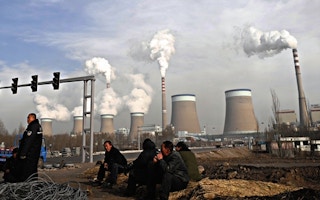The performance of the world carbon market continues to disappoint.
According to the latest figures from Thomson Reuters Point Carbon, a specialist group analyzing carbon market activity, a total of €38.4 bn worth of carbon allowances and credits was traded last year – a decline of nearly 40 per cent on the 2012 figure.
The value of trading in the market has now declined for three years in a row – in 2011 trades were valued at €96 bn. 2013 also saw the volume of emissions units traded around the world drop for the first time since 2010.
“The main explanation for the falling prices in carbon markets around the world is the very modest emissions reduction targets adopted for the period up to 2020”, says Anders Nordeng, senior carbon analyst at Point Carbon.
“Without ambitious climate targets there is no need for deep emission reductions and carbon prices will remain at low levels.“
Too cheap to work
The EU’s Emissions Trading System (ETS) dominates the world’s carbon trading, accounting for 94 per cent of the market’s total value and 88 per cent of the volume of emission units traded.
The scheme, which has been in operation since 2005, was set up with the aim of reducing CO2 emissions by requiring companies such as energy suppliers and other industrial conglomerates to pay for their emissions through the buying and selling of allowances or “pollution permits.”
Initial market mismanagement resulted in a chronic over-supply of tradeable permits. In recent years Europe’s economic crisis lessened economic activity and reduced the demand for allowances.
Allowances, based on the market price of a tonne of carbon, are now trading at around the €5 mark though at one stage in 2013 the price dropped to under €3. Market analysts say a price of at least €25 is needed in order to persuade companies to decarbonise and for carbon reduction targets to be achieved.
Point Carbon says it’s not all gloom in the market. While the ETS continues to underperform, other carbon markets are developing. Trading in North America, driven by activity in California, in north-eastern states in the US and Quebec in Canada, grew both in value and volume last year.
Chinese potential
“2013 was the year the North American carbon markets blossomed”, says Olga Chistyakova, a Point Carbon analyst.
China is also stepping up carbon trading, having launched the first of seven proposed regional trading schemes in mid-2013.
“Although the traded volumes are still modest, the sheer size of some of the covered provinces and cities (Guangdong, Beijing, Shanghai) points to a great potential”, says Point Carbon.
Meanwhile, the ETS has undergone some limited changes aimed at shoring up carbon prices. After months of wrangling between states, the sale of 900 million ETS allowances has been postponed. And what’s billed as a comprehensive structural reform of the ETS is due to be announced in mid-January.
There are also signs that the corporate sector, particularly in the US, is adopting carbon trading as part of business strategy. A recent survey by the Carbon Disclosure Project found that many large US corporations are setting their own internal carbon pricing in anticipation of future environmental legislation and to assess the value and risk of various investment projects.










